|
Ancient Traditional TCM Herbal
Potent Antioxidant / Antiinflammatory & Antioxidant
Antimutagenic / Fights hair loss (alopecia) & greying
Exhibits Antiaging Properties on Multiple Pathways
 Summarized Description:
He Shou Wu Summarized Description:
He Shou Wu is a revered Chinese herbal and member of the
buckwheat (Polygonaceaa) family. It has been known by three
distinct scientific names: Polygonum multiflorum, Fallopia
multiflora, and Reynoutria multiflora. 1.
Protocols
 Studies show that the maximum benefits
of He Shou Wu are experienced with dosages as little as 800 mg. daily. Studies show that the maximum benefits
of He Shou Wu are experienced with dosages as little as 800 mg. daily.
Contraindications
 Do not take this product if you have
any history of liver disoorders, unless on the direction of a qualified practitioner.
If you have any questions, please write to us at: support@herbhealers.com. Do not take this product if you have
any history of liver disoorders, unless on the direction of a qualified practitioner.
If you have any questions, please write to us at: support@herbhealers.com.
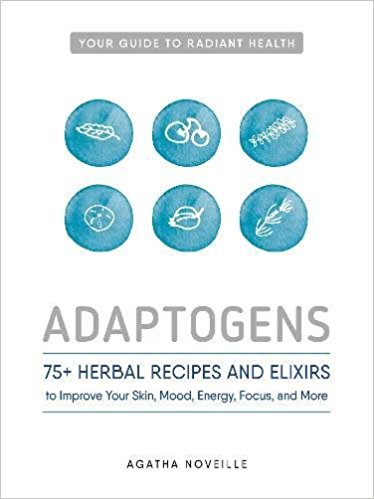
Medicinal Activities
 Further information for practitioners:
The best information is in the extinct literature (see PubMed literature at right),
although some lay materials are available (see sample book at right on Adaptogens,
of which He Shou Wu is prominent) to give a
rough overview. Further information for practitioners:
The best information is in the extinct literature (see PubMed literature at right),
although some lay materials are available (see sample book at right on Adaptogens,
of which He Shou Wu is prominent) to give a
rough overview.
- Antiaging 18, 34, 40, 51,
42, 46
- Antiasthmatic 37
- Antiatherosclerotic 53
- Antidepressant 8
- Antifibrosis 29
- Antifungal 55
- Antihyperlipidemic 14
- Antiinflammatory 3, 21, 29, 31,
41, 67
- Antimetastatic 30
- Antimicrobial 31
- Antimutagenic 76
- Antineuroinflammatory 24
- Antioxidant 2, 11, 12, 31,
34, 63, 64, 69,
70, 75
- Antitumor 3, 11, 26, 29,
- Antiviral 10
- Hepatoprotective, 4, 29, 31 in small doses
- Hepatotoxic 17 in large doses and/or among those with CYP1A2 or CYP2E1 low activity activity
from genetic polymorphism 22 "in large doses and with long-term use" 31
- Memory-enhancing 28 -- enhances hippocampal memory 35
- Myocardial protective 77
- Nephroprotective 29
- Neuroprotective 12, 32, 38,,
51, 54, 72
- Suppression of AGEs (advanced glycation end-products), contributors to human aging. 50
Indications
- Age-related diseases, general 4
- Alopecia 20, (hair loss) 40, 45,
48, 49, 52, 60
- Alzheimer's disease 40, 47, 58,
65, 67, 70
- Asthma 13 , 37
- Atherosclerosis 40, 53, 57,
71
- Brain injury (reperfusion-induced) 9
- Cancer 31
- Cancer, breast 59
- Cancer, lung 3
- Cardiac reperfusion injury 70
- Cognitive impairment 67,, 75
- Diabetes 7,, 40
- Diabetic nephropathy 62
- Dizziness 10
- DNA repair 76
- Fibrosis 40
- Hair, greying 6, 19, 48
- Hormone Replacement Therapy (HRT) 66, 73
- Hyperlipidemia 14, 20
- Hyperpigmentation 19, 33
- Hypertension 20, 36
- Insomnia 16
- Ischemia, cerebral 9, 32, 40
- Learning disorders 40, 61
- Memory disorders 40, 58, 61
- Neurodegenerative diseases (general) 47
- Neuroinflammation 40
- Osteoporosis 4, 39, 56
- Parkinson's disease 40, 43
- Restenosis 57
- Scrofula 10
- Skin damage (from ultraviolet B -- UBV) 69
- Spermatorrhea 10
- Thymus injury ("induced by cyclophosphamide") 74
- Vitiligo 20
References
- Wikipedia -
Fallopia multiflora -- See references.
- (2017)
Preparation, characterization and antioxidant activity of polysaccharide from Fallopia multiflora (Thunb.) Harald.
This study focuses on one particular polysaccharide (FMP) from He shou wu, but the herb is well-known for its
overall antioxidant properties.
-
2,3,5,4 tetrahydroxy diphenylethylene 2 O glucoside inhibits the adhesion and invasion of A549 human lung cancer cells. (2017)
-
Tetrahydroxystilbene glucoside isolated from Polygonum multiflorum Thunb. demonstrates osteoblast differentiation promoting activity. (2017)
-
Hepatoprotection and hepatotoxicity of Heshouwu, a Chinese medicinal herb: Context of the paradoxical effect. (2017)
-
Polygonum multiflorum Radix extract protects human foreskin melanocytes from oxidative stress
in vitro and potentiates hair follicle pigmentation ex vivo. (2017)
-
Anti-diabetic activities of cis- and trans-2,3,5,4'-tetrahydroxystilbene 2-O-β-glucopyranoside from Polygonum multiflorum. (2017)
-
Antidepressant-like effects of tetrahydroxystilbene glucoside in mice: Involvement of BDNF signaling cascade in the hippocampus. (2017)
-
2,3,5,4'-Tetrahydroxystilbene-2-O-β-D-Glucoside Attenuates Ischemia/Reperfusion-Induced Brain Injury in Rats by Promoting Angiogenesis. (2017)
-
Inhibitory effect of Emodin on raw 264.7 activated with double stranded RNA analogue poly I:C. (2017)
-
Structural, physicochemical, antioxidant and antitumor property of an acidic polysaccharide from Polygonum multiflorum. (2017)
-
Neuroprotective effects of 2,3,5,4'-tetrahydoxystilbene-2-O-β-D-glucoside from
Polygonum multiflorum against glutamate-induced oxidative toxicity in HT22 cells. (2017)
-
Erratum: "Polygonum multiflorum Decreases Airway Allergic Symptoms in a Murine Model of Asthma". (2017)
-
The Anti-hyperlipidemia Effects of Raw Polygonum multiflorum Extract in Vivo. (2017)
-
Survey on the Original Plant Species of Crude Drugs Distributed as Cynanchi Wilfordii Radix
and Its Related Crude Drugs in the Korean and Chinese Markets. (2017) -- Note:
I include this in References to note counterfeit plants that are being introduced
in place of true He Shou Wu.
-
Stilbene Glucoside, a Putative Sleep Promoting Constituent from Polygonum multiflorum Affects
Sleep Homeostasis by Affecting the Activities of Lactate Dehydrogenase and Salivary Alpha Amylase. (2017)
-
Hepatotoxicity in Rats Induced by Aqueous Extract of Polygoni Multiflori Radix,
Root of Polygonum multiflorum Related to the Activity Inhibition of CYP1A2 or CYP2E1. (2017)
-
Antiaging and Anxiolytic Effects of Combinatory Formulas Based on Four Medicinal Herbs. (2017)
Note: This study actually involves studying the combined effects of four distinct
herbs. "The objective of the present study was to search for medicinal-herb combinations based on
Radix Bupleurum chinense DC
("B" -- also called "Chai Hu,", Rhizoma Corydalis yanhusuo
WT Wang ("Y" or "yan hu suo"), Caulis Polygonum multiflorum Thunb ("P"),
and Flos Albizia julibrissin
Durazz ("A") for antiaging, anxiolytic, and sedative effects
. (2017)
-
Polygonum multiflorum root extract as a potential candidate for treatment of early graying hair. (2017)
-
[Research development and thinking of clinical study of Polygonum multiflorum]. (2017)
Covers many established benefits of PM, but also covers potential adverse reactions
from misuse, which include: "liver damage, allergic reactions, mental symptoms, chronic enteritis, etc."
-
HO-1 Is Essential for Tetrahydroxystilbene Glucoside Mediated Mitochondrial Biogenesis and Anti-Inflammation
Process in LPS-Treated RAW264.7 Macrophages. (2017)
-
Chemical Reactivity of Emodin and Its Oxidative Metabolites to Thiols. Attempts to uncover why
Emodin (EM) might induce hepatotoxicity. (2016)
-
[Bencao literature investigation of Polygonum multiflorum (Heshouwu)]. (2016)
Covers origin and historical evolution of Baishouwu ("white Heshouwu").
-
Anti-neuroinflammatory Effect of Emodin in LPS-Stimulated Microglia: Involvement of AMPK/Nrf2 Activation.
-
Quality evaluation of Heshouwu, a Taoist medicine in Wudang, China. (2016)
Focuses on PM from the Wudang mountain area.
-
Ultrasonic-assisted extraction, structure and antitumor activity of polysaccharide from Polygonum multiflorum. (2016)
-
Mechanisms of Heshouwuyin in regulating apoptosis of testicular cells in aging rats through mitochondrial pathway. (2016)
-
Chronic administration tetrahydroxystilbene glucoside promotes hippocampal memory and synaptic plasticity
and activates ERKs, CaMKII and SIRT1/miR-134 in vivo. (2016)
-
A Comprehensive and System Review for the Pharmacological Mechanism of Action of Rhein, an Active Anthraquinone Ingredient. (2016)
-
2,3,5,4'-tetrahydroxystilbene-2-O-β-D-glucoside suppresses human colorectal cancer cell metastasis through inhibiting NF-κB activation. (2016)
-
Emodin: A Review of its Pharmacology, Toxicity and Pharmacokinetics. (2016)
-
Emodin from Polygonum multiflorum ameliorates oxidative toxicity in HT22 cells and deficits in photothrombotic ischemia. (2016)
-
Emodin isolated from Polygoni Multiflori Ramulus inhibits melanogenesis through the liver X receptor-mediated pathway. (2016)
-
Integrated chemometric fingerprints of antioxidant activities and HPLC-DAD-CL for assessing the quality of the processed
roots of Polygonum multiflorum Thunb. (Heshouwu).
-
PMC-12, a traditional herbal medicine, enhances learning memory and hippocampal neurogenesis in mice. (2016)
Note: The formula PMC-12 is actually a combination of
mixture of four medicinal herbs, that is, Polygonum multiflorum,
Polygala tenuifolia,
Rehmannia glutinosa, and
Acorus gramineus.
-
Tetrahydroxystilbene Glucoside Inhibits Excessive Autophagy and Improves Microvascular Endothelial Dysfunction
in Prehypertensive Spontaneously Hypertensive Rats. (2016)
-
Polygonum multiflorum Decreases Airway Allergic Symptoms in a Murine Model of Asthma. (2016)
-
Tetrahydroxystilbene Glucoside Improves Neurotrophic Factors Release in Cultured Astroglia. (2016)
-
Effects of Hot Water Extracts from Polygonum multiflorum on Ovariectomy Induced Osteopenia in Mice. (2016)
-
Biological Activities of 2,3,5,4'-Tetrahydroxystilbene-2-O-β-D-Glucoside in Antiaging and Antiaging-Related Disease Treatments. (2016)
-
Nuclear Factor Kappa B Activation and Peroxisome Proliferator-activated Receptor Transactivational Effects
of Chemical Components of the Roots of Polygonum multiflorum. (2016)
-
[Recent advances in anti-aging study of 2,3,5,4'-tetrahydroxystilbene-2-O-beta-D-glucopyranoside--a main component of Polygonum multiflorum]. (2016)
-
Protective effects of 2,3,5,4'-tetrahydroxystilbene-2-O-β-D-glucoside in the MPTP-induced mouse model of Parkinson's disease:
Involvement of reactive oxygen species-mediated JNK, P38 and mitochondrial pathways. (2015)
-
In vivo hair growth-stimulating effect of medicinal plant extract on BALB/c nude mice. (2015)
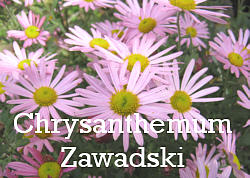
-
In vivo hair growth-stimulating effect of medicinal plant extract on BALB/c nude mice. (2015)
Note: Study combined use of
"Chrysanthemum
zawadskii var. latilobum (Asteraceae) (CZ)
and Polygonum multiflorum Thunb. (Polygonaceae) . . . using methanol extracts of 10 mg/mouse/day . . . for 40 consecutive days."
-
Emoghrelin, a unique emodin derivative in Heshouwu, stimulates growth hormone secretion via activation of the ghrelin receptor. (2015)
-
In Vivo Screening of Traditional Medicinal Plants for Neuroprotective Activity against Aβ42 Cytotoxicity by Using Drosophila Models
of Alzheimer's Disease (2015)
-
Mechanistic Studies on the Use of Polygonum multiflorum for the Treatment of Hair Graying. (2015)
-
Hair Growth Promotion Activity and Its Mechanism of Polygonum multiflorum. (2015)
-
Purification, antioxidant activity and antiglycation of polysaccharides from Polygonum multiflorum Thunb. (2014)
-
An in vitro study of neuroprotective properties of traditional Chinese herbal medicines thought to promote healthy ageing and longevity. (2013)
-
Promotion effect of constituents from the root of Polygonum multiflorum on hair growth. (2013)
-
Proteomic analysis for anti-atherosclerotic effect of tetrahydroxystilbene glucoside in rats. (2013)
-
Tetrahydroxystilbene glucoside attenuates neuroinflammation through the inhibition of microglia activation. (2013)
-
Chemoenzymatic synthesis of two new halogenated coumarin glycosides as potential antifungal agents. (2012)
-
Protective effect of tetrahydroxystilbene glucoside against hydrogen peroxide-induced dysfunction
and oxidative stress in osteoblastic MC3T3-E1 cells (2012)
-
2,3,4',5-tetrahydroxystilbene-2-O-β-D-glucoside inhibits proliferation of vascular smooth muscle cells:
involvement of NO/cGMP/PKG pathway. (2012)
-
In vitro screening on amyloid precursor protein modulation of plants used in Ayurvedic
and traditional Chinese medicine for memory improvement. (2012)
-
Anti-proliferative effect of an extract of the root of Polygonum multiflorum Thunb.
on MCF-7 human breast cancer cells and the possible mechanisms. (2011)
-
Topical application of Polygonum multiflorum extract induces hair growth of resting hair follicles
through upregulating Shh and β-catenin expression in C57BL/6 mice. (2011)
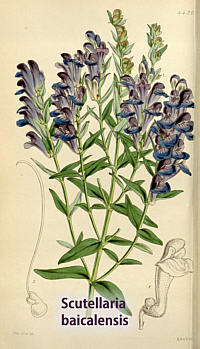
-
Tetrahydroxystilbene glucoside, a plant-derived cognitive enhancer, promotes hippocampal synaptic plasticity. (2011)
-
Tetrahydroxystilbene glucoside ameliorates diabetic nephropathy in rats: involvement of SIRT1 and TGF-β1 pathway. (2011)
-
The protective effects of Polygonum multiflorum stilbeneglycoside preconditioning in an ischemia/reperfusion model of HUVECs. (2010)
-
Evaluation of anti-oxidant capacity of root of Scutellaria baicalensis Georgi, in comparison with roots
of Polygonum multiflorum Thunb and Panax ginseng CA Meyer. (2010) Note: In this particular
study, PM showed strong anti-oxidant properties, but extracts of
"Huangqin," roots of Scutellaria baicalensis
Georgi (Lamiaceae), showed even stronger anti-oxidant properties using this study's methodologies. (2009)
-
Effect of polygonum multiflorum on the fluidity of the mitochondria membrane and activity of COX in the hippocampus
of rats with Abeta 1-40-induced Alzheimer's disease. (2008)
-
Screening of estrogenic and antiestrogenic activities from medicinal plants. (2008)
-
Changes in hippocampal synapses and learning-memory abilities in age-increasing rats
and effects of tetrahydroxystilbene glucoside in aged rats. (2007)

-
Evaluation of oriental medicinal herbs for estrogenic and antiproliferative activities. (2006)
Note: In this particular study, a entire group of Chinese medical herbs were tested for
cytotoxicity against cancer cell lines. However, showed the strongest
cytotoxicity in ER-negative breast cancer (MDA-MB-231), cervix epitheloid (HeLa)
and lung (A549) carcinoma cell lines.
-
An extract of Polygonum multiflorum protects against free radical damage induced by ultraviolet B irradiation of the skin. (2006)
-
Protective effect of Polygonum multiflorum Thunb on amyloid beta-peptide 25-35 induced cognitive deficits in mice. (2006)
-
Reduction of atherosclerosis in cholesterol-fed rabbits and decrease of expressions of intracellular
adhesion molecule-1 and vascular endothelial growth factor in foam cells by a water-soluble fraction of Polygonum multiflorum. (2005)
-
Neuroprotective effects of Polygonum multiflorum on nigrostriatal dopaminergic degeneration induced by paraquat and maneb in mice. (2005)
-
In vitro estrogenic activities of Chinese medicinal plants traditionally used for the management of menopausal symptoms. (2005)
-
Astragalus mongholicus and Polygonum multiflorum's protective function against cyclophosphamide inhibitory effect on thymus. (2004)
Note: PM was used in this study in conjunction with Astragalus mongholicus (Astragalus propinquus).
-
Polygonum multiflorum extracts improve cognitive performance in senescence accelerated mice. (2003)
-
Antimutagenic property of an herbal medicine, Polygonum multiftorum Thunb. detected by the Tradescantia micronucleus assay. (1999)
-
Myocardial protective effect of an anthraquinone-containing extract of Polygonum multiflorum ex vivo. (1998)
- Richard Lucas, Secrets of the Chinese Herbalists, Parker Publishing Company, Inc., West Nyack, NY. 1977.
ISBN 0-13-797639-9.
- Richard Lucas, ibid., p. 94-96.
- Richard Lucas, ibid., p. 96, quoting Bernard, Raymond, Herbal Elixirs of Life, Mukulmne Hill, Calif.:
Health Research, 1959, p. 20.
- Ibid., p. 20
- See Meditopia - Chapter 3.
- Paul Twitchell, Herbs: The Magic Healers, Eckankar, Minneapolis, MN. (1971).
- Ibid., p. 207-209.
|
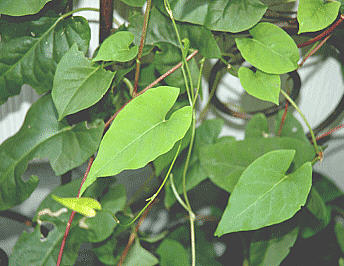
 To U.S. Users: To U.S. Users: This product
have not been evaluated by the U.S. Food & Drug Administration.
It is not intended to diagnose, treat, cure, or prevent any disease.
|
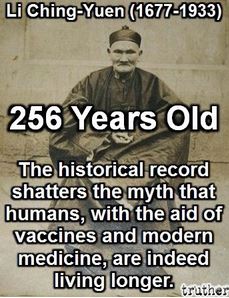
 The anti-aging properties of "He shou wu" are legendary in China.
I first became aware of its properties in the late 1980s, as a studious herbalist, when exposed
to Richard Lucas's book on Chinese herbals, which I still keep in my herbal library. 78
 The amazing story of Li Ching-Yuen seems fanciful
at best, and I myself might question its voracity if I didn't know a Chinese herbalist here in
Ecuador, senior to myself, whose grandfather had been friends with Li Ching-Yuen in China. The relevant
section in Lucas's book is relevant for our purposes. 79
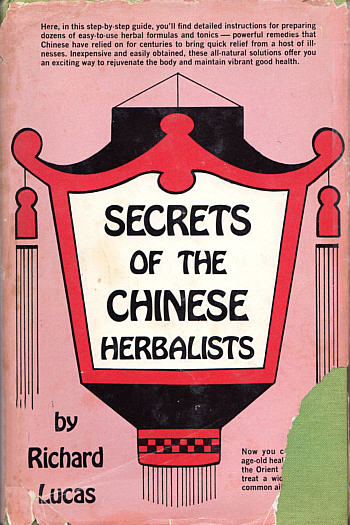
Chapter 6
The Chinese "Elixir of Life" Plant
 "In 1933 The New York Times announced the death
of Professor Li Chung Yun, a remarkable Oriental whose life span had reached over two and a half
centuries! His age (256) was officially recorded by the Chinese government and confirmed by
various investigators, including Professor Wu Chung Chich, head of the Chang-Tu University.
Li had reportedly outlived 23 wives and was living with his 24th at the time of his death.
 "An article from the Golden Age stated taht the
antigue gentleman gave a source of 28 lectures on longevity at a Chinese university, and at the
time he gave this course of three-hour long lectures, he was over the age of 200. It was declared
that those who saw him claimed that he did not appear older than a man of 52.
 "The Toronto Globe carried the following story in 1933:
 "Even in the hurrying Occident there will be regret that
Li Chung Yun, veteran resident of Kaihsien, in the province of Szechwan, has been called from the
scene of his activities, taken off in his prime at the age of 197 years. The cabled story carries
no details as to the malady that cut short a useful life, and the inference must be that Li was
a war casualty. His marital ventures were numerous, and he, with some eleven generations of
descendants, no doubt formed an impressive military unit. "Even in the hurrying Occident there will be regret that
Li Chung Yun, veteran resident of Kaihsien, in the province of Szechwan, has been called from the
scene of his activities, taken off in his prime at the age of 197 years. The cabled story carries
no details as to the malady that cut short a useful life, and the inference must be that Li was
a war casualty. His marital ventures were numerous, and he, with some eleven generations of
descendants, no doubt formed an impressive military unit.
 "This is but half the story. In the Western world aging
men are inclined to boast of their years, slyly adding a few birthdays, but it was different
with Li Chung Yun, who appears to have been cheating in the other direction. A professor in the
Minkuo University claims to have found records showing that Li was born in 1677, and that on
his 150th birthday and 200th birthday he had been congratulated by the Chinese government -- as
well he might. Men who are old today declare that their great-grandfathers, as boys, knew Li
as a grown man. "This is but half the story. In the Western world aging
men are inclined to boast of their years, slyly adding a few birthdays, but it was different
with Li Chung Yun, who appears to have been cheating in the other direction. A professor in the
Minkuo University claims to have found records showing that Li was born in 1677, and that on
his 150th birthday and 200th birthday he had been congratulated by the Chinese government -- as
well he might. Men who are old today declare that their great-grandfathers, as boys, knew Li
as a grown man.
 "Dieticians should look into this. It is unlikely that during the
first 100 years or so of his life Li Chung Yun knew anything about vitamins or calories; and certainly
no radio instructions about setting-up exercises awakened him at dawn. Early in life -- either about
1690, 1750, or thereabouts -- this Chinese lad developed a penchant for collecting herbs, a habit
that he did not shake off for a century; then he began to sell them. And here is the point:
What did Li discover? Some neglected weed that contained the elixir of life? modern glass of -- oh,
well no matutinal beverage of today will carry a man much past the century mark; so why make comparisons? "Dieticians should look into this. It is unlikely that during the
first 100 years or so of his life Li Chung Yun knew anything about vitamins or calories; and certainly
no radio instructions about setting-up exercises awakened him at dawn. Early in life -- either about
1690, 1750, or thereabouts -- this Chinese lad developed a penchant for collecting herbs, a habit
that he did not shake off for a century; then he began to sell them. And here is the point:
What did Li discover? Some neglected weed that contained the elixir of life? modern glass of -- oh,
well no matutinal beverage of today will carry a man much past the century mark; so why make comparisons?
 "Whatever was his secret, Li Chung Yun kept it well.
All he let the world know was that it was the part of wisdom to 'keep a quiet heart, sit like a
tortoise, walk sprightly like a pigeon, and sleep like a dog.' But that is merely camouflage.
There are people without number today who have the tortoise temperament and whom it is almost
impossible to awaken in the morning, but they pass on without any notice in cable dispatches.
'Walking sprightly like a pigeon' is among the arts lost by man, and it may be that loss of his
favorite herb led to Li's untimely taking off; which is a discouraging conclusion to the life
story of a calm Oriental who watched the centuries come and go." "Whatever was his secret, Li Chung Yun kept it well.
All he let the world know was that it was the part of wisdom to 'keep a quiet heart, sit like a
tortoise, walk sprightly like a pigeon, and sleep like a dog.' But that is merely camouflage.
There are people without number today who have the tortoise temperament and whom it is almost
impossible to awaken in the morning, but they pass on without any notice in cable dispatches.
'Walking sprightly like a pigeon' is among the arts lost by man, and it may be that loss of his
favorite herb led to Li's untimely taking off; which is a discouraging conclusion to the life
story of a calm Oriental who watched the centuries come and go."
Two of Li's Secret Herbs?
 "The secret of Professor Li's longevity still remains
a mystery. But it is generally believed by various sources that whatever his overall health
program might have been, it included the use of several different herbs, and that two of these
herbs have been disclosed. For example, an early article from the Golden Age stated:
'For two hundred years ginseng root has been a part of his [Professor Li's] diet every day.
He advocates an herb diet and disbelieves in any exercise that tires.'
 "The other plant allegedly used by Professor Li, is known as
Fo-Ti-Tieng -- [another name for He Shou Wu] -- an herb the Orientals call the "Elixir of Life."
(This plant is not to be confused with an herb commonly called Gotu Kola which is known botanically
as Centella asiatica.) This botanical has reputedly been employed as a tea by the people
of the Heung San district of China for centuries.
 "Some years ago, in reference to Li's use of this herb,
Mr. P. de B. Layman, F.R.H.S., M.H.P.A. of the Herbal Research Institute of London, wrote an article
in which he said, 'Fo-Ti-Tieng is not as renowned among Chinese and Eastern Indian scholars as a food
possessing great life-sustaining properties. It was Professor Li Chung Yung, however, whose lectures
on Fo-Ti-Tieng and the way to healthy longevity first began to attract the attention of other than
native students and introduced the plant to certain European doctors resident in Peking.' 80
 "Information on the herb Fo-Ti-Tieng and its use by Professor Li
Chung Yun was also mentioned in a book by Raymond Bernard, M.A., Ph.D. Dr. Bernard wrote: '. . . it was
due to the fact that the famous long-lived Chinese herbalist, Li Chung Yun, who lived to the age of
256 years, used the herb Fo-Ti-Tieng daily that gained its popularity, which led the French government
to send a committee of experts to Algeria, where they established an experimental station to study it and
led the English government to endow a research foundation in connection with a college in Colombo, Ceylon,
for the same purpose. A Hindu sage named Nanddo Narian, when 107 years old, who had used the herb
successfully as a preventative of senility claimed that the herb contained an ingredient which tended to
prolong the vigor of the brain in old age and to prevent its usual senile degeneration with advancing years. 81
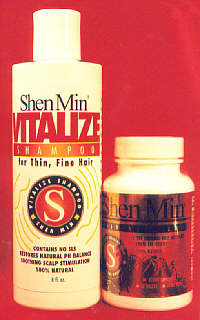
 He shou wu He shou wu was the active ingredient
in the Shen Min Hair Regeneration products
which Alpha Omega Labs resold until the FDA destroyed our U.S. laboratory and
warehouses in 2003 -- a subject covered in Meditopia. 82
 More recent studies have only confirmed
the hair regenerative properties of He shou wu: both in terms of hair regrowth
(treatment for alopecia) and the elimination of grey hair.
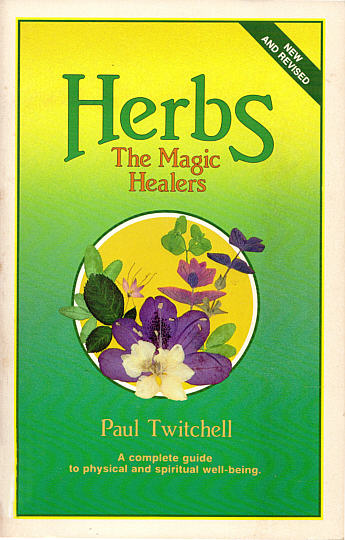
 Folklore and unusual stories about
He shou wu can be found in a wide variety of place -- sometimes
quite unexpectedly. Paul Twitchell, a major figure in the Eckankar® movement,
tells one such story in his book, Herbs: The Magic Healers. 83
Stories such as this as difficult to discount, because they come from diverse places and
are so homogenous:
 "One of the most important herbs, and one known
to the ECK Masters for centuries, is the fo-ti-tieng . . . a plant with extraordinary
rejuvenating effects on the human brain cells and endocrine glands. Some scientific and medical
researchers say it contains an unknown vitamin. Since this vitamin has not been fully researched,
it has been given the name of vitamin X.
 "The herb is found only in the marshy, jungle area of Ceylon,
south China, and southwest Asia. With ginseng, which has already been discussed elsewhere in this
book, gotu kola, and sarsaparilla, this ancient, but recently rediscovered, plant has given man hope
for longevity . . .
 "Fo-ti-tieng is called the "Elixir of Life" or "Long Life Elixir."
It is not a plant which would attract the attention of most people, yet it has become well known among
Chinese and Indian scholars as a food which contains a great life-sustaining property. Its action is
aromatic, corrective, diuretic, and nutritive. It is also used as a stimulant and a tonic. It has several
uses as a remedy besides being a defense against old age. It is used to combat fevers, piles, bowel
complaints, and scrofulous conditions. It is said to strengthen and energize the brain. A few leaves
a day are taken, but it appears that they are chewed, rather than drunk in a tea.
 Fo-ti-tieng does possess the virtue of promoting good health and
longevity . . . It is said to produce a general sense of good feeling, clear thinking, energy,
and an improvement in appearance.
 "Many of the ECK Masters during the early days on this planet
developed the fo-ti-tieng for the purpose of helping people overcome many of their ailments and create
a good life without pain and unhappiness. However, in the past few centuries, the practice has died
out because they have found that it brought about more of an interest in the material side of
life rather than the spiritual . . ." 84
|









